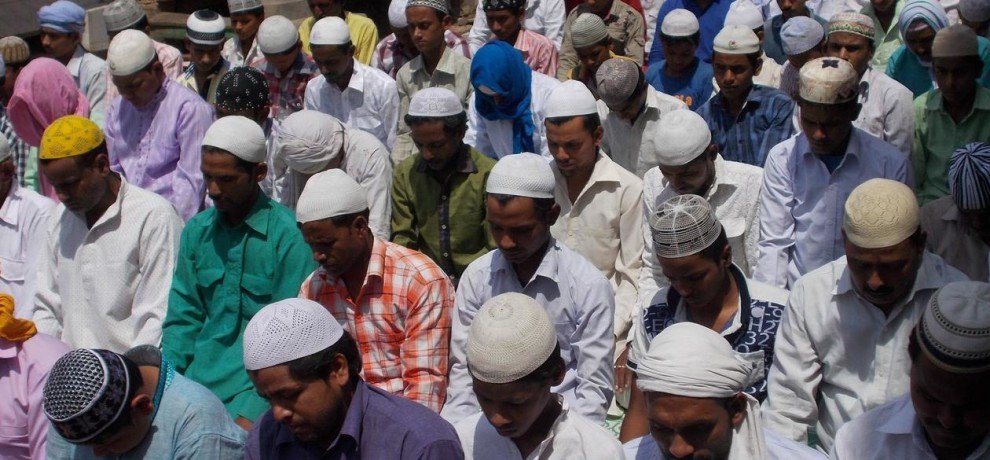
Dalit Pichda Ek Saman, Hindu Ho Ya Musalman
The endemic nature of quotidian caste atrocity and episodic inter-religious communal violence, and especially its effect on women, has historically assumed an air of eerie obviousness in the popular imagination in India. Yet the phrase “rising intolerance” employed in recent discussions indicates a dramatic escalation of various manifestations of violence, especially since the right-wing BJP captured power in 2014. The murders of rationalists, the lynching of Dalits and Muslims on the pretext of saving the cow, the crackdown on dissenting student voices from marginalized sections or radical political traditions and the general culture of fear generated in the public sphere are unprecedented. How does one account for this contemporary rage and violence?
I would tentatively engage with this question by advancing two lines of argument. First, in India the “social”, configured primarily in terms of caste, is the key storehouse of power. One may locate the contemporary rage and intolerance in the dislocations within the social due to the sedimentation of neo-liberal and democratic discourses. Second, there is rising intolerance across faith traditions.
Since caste is not merely a Hindu phenomenon but constitutes the specific South Asian sociality that cuts across faiths269, the ruptures in the social affect all religious collectivities. While the competitive nature of inter-religious violence or communalism, which often foregrounds “majority-minority” or “Hindutva-Islamism” duopolies, is often the object of most enquiries, I would suggest that one also needs to retrieve the symbiotic and co-constitutive nature of contending communalisms as restorative attempts to preserve the de facto law of caste by elites across religions.- I Caste in South Asia has been a key mode of exclusion that has hitherto governed the distribution of power and resources. Dr B.R. Ambedkar, the foremost anti-caste theoretician and leader, termed the caste system Brahmanism and articulated it as a system of graded inequality that entailed “a gradation of castes forming an ascending scale of reverence and a descending scale of contempt.” It is a system of ranked differences where the four major status groups or varnas—Brahmins (priests), Kshatriyas (warriors), Vaishyas (merchants), Shudras (labourers/artisans)—are hierarchically arranged in terms of purity and pollution, with Brahmins being considered ritually the purest. There is also a fifth group of avarnas/panchamas/atishudra, now popularly recognized as Dalits, which comprise the formerly untouchables and are technically outside the fourfold caste order. Adding to the complexity of social stratification, each of these broad normative categories is further differentiated internally into endogamous and hereditary occupational groups termed jatis. In practice, jatis are probably the more functional and easily identifiable units, even when their textual hierarchy is often complicated, subverted and redefined daily in the political.
As an enduring effect of orientalist discourse, caste has been usually framed as a Hindu phenomenon but empirically it has organized social life in all religious traditions—including Islam and Christianity—in India. For instance, among Muslims three kinds of status groups can be identified: One, those who trace their origin to foreign lands and the converts from Hindu higher castes (ashraf); two, the converts from clean occupational castes (ajlaf); and three, the converts from the formerly untouchable (Dalit) castes (arzal). Moreover, the Ashraf constitute the highest stratum within this structure. Their position and rank within the Muslim caste system is almost identical with that which the Brahman and Kshatriya grouped together are granted in the Hindu caste hierarchy. Thus, both the Sayyad and Shaikh, as competent religious pedagogues and priests, are almost identical with the Brahman; whereas both the Mughal and Pathan, being famous for their chivalry, appear to be equal to the Kshatriya.
In recent decades, the Pasmanda movement, organized by the lower-caste Muslims in order to challenge upper-caste hegemony within Indian Islam, tries to address this gap. The Pasmanda discourse has foregrounded the complicity of upper-caste Muslim elites in sustaining and reproducing communal discourse that is often instrumental in legitimizing episodes of communal violence. In fact, there is a stress on the dialectical relationship between majority and minority communalisms and the Pasmanda movement proposes to contest minoritarian fundamentalism from within in order to wage a decisive battle against majoritarian fundamentalism at the national level. Ali Anwar, the leader of the movement, opines thus: We see that the politics of communalism, fuelled by both Hindu and Muslim elites, is aimed at dividing us, making us fight among ourselves, so that the elites continue to rule over us as they have been doing for centuries. This is why we…have been seeking to steer our people from emotional politics to politics centred on issues of survival and daily existence and social justice, and for this we have been working with non-Muslim Dalit and Backward Caste movements and groups to struggle jointly for our rights and to oppose the politics of communalism fuelled by Hindu and Muslim ‘upper’ caste elites.
Read also –




+ There are no comments
Add yours